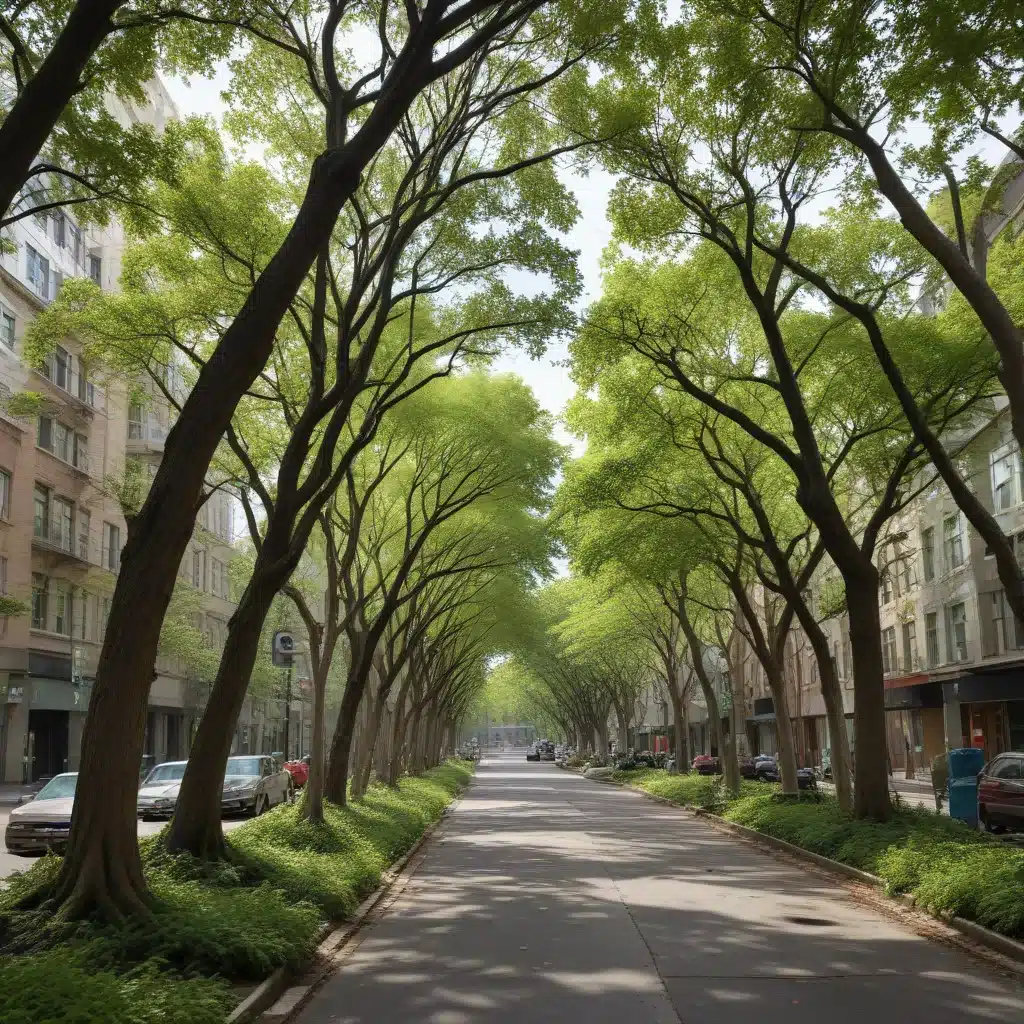
The urban tree canopy is a vital, yet often overlooked, component of community resilience. These arboreal ecosystems provide a myriad of benefits, from improving air quality and mitigating urban heat islands to enhancing stormwater management and boosting property values. However, the urban forest faces an array of threats, from natural disasters to human-induced pressures. As climate change amplifies the frequency and intensity of extreme weather events, safeguarding the urban canopy has become an urgent priority for municipalities and urban forestry professionals across the country.
Urban Tree Canopy: The Heart of Livable Cities
Urban trees are the backbone of livable, sustainable communities. Through the process of photosynthesis, they absorb carbon dioxide and release oxygen, purifying the air we breathe. Their canopies provide crucial shade, reducing ambient temperatures and cooling the surrounding microclimate. Additionally, the intricate root systems of urban trees help to stabilize soils, enhance soil permeability, and mitigate stormwater runoff, lessening the impact of floods and other water-related disasters.
Beyond their environmental benefits, urban trees also offer significant social and economic value. Studies have shown that the presence of a robust tree canopy can increase property values, attract businesses, and foster a greater sense of community pride and well-being among residents. In the wake of natural disasters, the loss of these arboreal assets can be profoundly felt, both in terms of physical damage and the emotional toll on affected communities.
Disaster Impacts on Urban Forests
Natural disasters, such as hurricanes, tornadoes, floods, and wildfires, can wreak havoc on urban tree populations, often resulting in widespread canopy loss and damage to individual trees. The impacts can range from uprooted and fallen trees blocking roads and damaging infrastructure to the complete decimation of entire neighborhoods’ worth of greenery. Human-induced disasters, including pests, diseases, and poor urban planning, can also pose significant threats to the urban forest.
Natural Disasters
Hurricanes, for example, can unleash powerful winds that snap trunks, tear off branches, and uproot trees, leaving a trail of debris and destruction in their wake. Flooding events, exacerbated by climate change, can inundate root systems, leading to tree mortality and instability. Wildfires, which are becoming more frequent and severe, can scorch urban forests, leaving behind a charred, barren landscape.
Human-Induced Disasters
Invasive pests and diseases, such as the emerald ash borer and sudden oak death, have decimated entire species of urban trees, devastating the diversity and resilience of the urban canopy. Furthermore, poor urban planning and development practices, such as excessive impervious surface coverage and inadequate tree preservation, can gradually erode the urban forest over time.
Disaster Resilience and Recovery
Securing the urban canopy in the face of these mounting threats requires a multifaceted approach, encompassing preparedness, response, and long-term recovery strategies. By taking proactive steps to assess risks, plan for emergencies, and implement best practices in urban forestry, communities can bolster the resilience of their urban forests and mitigate the impacts of future disasters.
Preparedness Strategies
Risk assessment is a crucial first step in building disaster resilience. By evaluating the vulnerabilities of the urban forest, such as the prevalence of hazardous tree species or the potential for storm damage, municipalities can prioritize areas for targeted management and intervention. Comprehensive emergency planning, including the development of urban forest management plans and coordination with emergency response teams, can ensure a coordinated, effective response in the wake of a disaster.
Disaster Response and Recovery
In the aftermath of a disaster, conducting thorough post-disaster tree assessments is essential for understanding the extent of the damage and informing the restoration and replanting efforts. TriCounty Tree Care, for example, can provide expert assessments and recommendations to guide the recovery process. Engaging the community in the restoration and replanting of trees can foster a sense of ownership and investment in the urban forest’s long-term health.
Sustainable Urban Forest Management
Ensuring the long-term sustainability of the urban canopy requires a comprehensive approach to urban forest management, focusing on enhancing diversity, resilience, and proactive maintenance.
Diversity and Resilience
Diversifying the tree species composition of the urban forest is crucial for bolstering its resilience to pests, diseases, and environmental stressors. By selecting a mix of native and well-adapted non-native trees, communities can create a more robust and adaptive urban forest. Maintaining a balanced age and size distribution of trees, with a mix of young, mature, and legacy specimens, can also help mitigate the impacts of widespread canopy loss.
Urban Forestry Best Practices
Proactive tree maintenance, including regular pruning, hazard assessments, and targeted treatments, can help to ensure the health and structural integrity of the urban forest, reducing the risk of storm damage and other disaster-related impacts. Fostering community engagement in urban forestry initiatives, such as tree planting and stewardship programs, can also cultivate a sense of ownership and investment in the urban canopy’s long-term well-being.
Policy and Governance
Effective urban forest management requires a strong policy and governance framework, with clear regulations, funding sources, and collaborative partnerships.
Urban Forestry Regulations
Tree protection ordinances and comprehensive urban forest management plans can help to safeguard the urban canopy by establishing guidelines for tree preservation, removal, and replacement. These policies can also mandate the use of sustainable tree-planting practices and promote the diversification of the urban forest.
Funding and Financing
Securing adequate public funding for urban forestry programs, including maintenance, planting, and disaster response, is crucial for sustaining the urban canopy. Exploring private-public partnerships and innovative financing mechanisms, such as stormwater fees and carbon offset programs, can also help to diversify the funding sources for urban forestry initiatives.
By embracing a holistic, proactive approach to urban forest management, communities can fortify their urban canopies, enhancing their resilience and ensuring the long-term health and vitality of these vital green assets. To learn more about TriCounty Tree Care’s comprehensive urban forestry services, please visit www.tricountytreecare.com.


